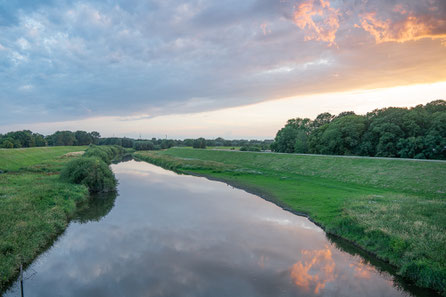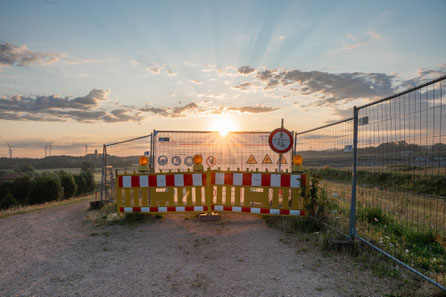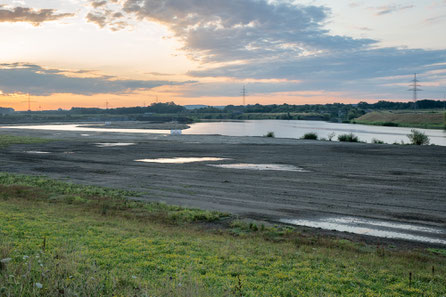If you have read my previous blog post, you already know that we were facing some heavy rains in the last winter here in Germany. What had probably saved us from more serious consequences, was the fact that there is a huge restoration project going on in our upstream neighbourhood.
Workaholic
But let me tell the story in a chronological order. The area where I live is deeply connected to the mining industry. For decades, people were working underground, digging deeper and deeper to reach for what is called the black gold: stone coal. Such underground activity often caused mining subsidence. The local Lippe river for example subsided partially by 14 meters which caused regular floodings in the close-by neighbourhoods. To prevent such events, dykes were build in the 1950s and 60s.
Surely, dykes prevent flooding but they also further restrict a river that had already been determined to be a workaholic anyway. Its water served as cooling water for power plants and delivered energy for hydropower plants. Its excess water was led to canals. Its shores were fixed to adapt it to the requirements of infrastructure and agriculture. A river sacrifiized to its surrounding man-made environment.
Restoring the River
We humans have exploited our rivers for far too long. We straightened, fixed, misused and polluted them. Economy over ecology. But since the 1990s there has been a change in thinking. The European Water Framework Directive, established in 2000, calls for "an holistic approach to waterbodies, especially from an ecological viewpoint". What politicians put into such unwieldy terms as bank release or water development measures basically means nothing other than restoration.
What does it mean? The Lippe originally is a broad and shallow river. Due to the massive stabilization of its shoreline, it often cut in deep into the ground. To restore it, it is essential to broaden the stream course and give back some space to the river. Such a project is currently in progress at Haltern-Lippramsdorf and Marl. As we Germans love abbreviations, this project is called HaLiMa. Here, new dykes had been built in the back country of the old ones. The dismantling of the old dikes will then create space for approximately 150 acres of meadows.
Habitat: Meadows
These lands then are left to their own devices so that nature can develop without human influence. Meadows are one of the most diverse ecosystems on earth offering a mosaic of different habitats such as dry gravel banks, wet swales, wide mud banks and steep banks. They serve as home for whole communities of plants, animals, fungi and microorganisms. They are also nurseries for fishes and amphibians: the more meadows along a river, the more fish.
Flood Protection
Floodplains support the biological, physical and chemical balance of rivers. They can absorb considerable amounts of water and thus help to weaken flood waves. Intact river floodplains therefore offer natural protection against flooding. And who knows what would have happened if this floodplain had not existed last winter...











Write a comment